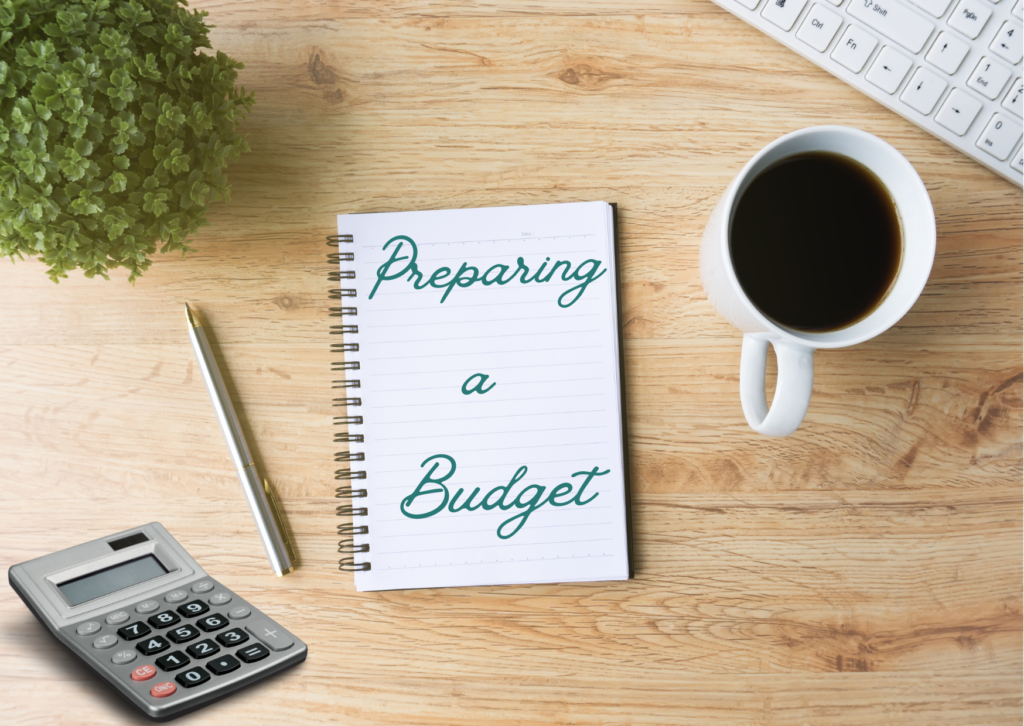A personal budget is an estimated financial plan that outlines your income and expenses and gives you a snapshot of your finances for a period of time1Definition adapted from: https://www.investopedia.com/terms/b/budget.asp . Though budgeting itself cannot make you rich, it is an important financial tool that can assist you with managing your money more efficiently. A few benefits of budgeting include:
- Preparation for both expected and unexpected life events;
- It can act as a debt management tool; and
- It helps you use your money wisely, which can potentially lead to a higher rate of saving.
Though budgeting itself cannot make you rich, it is an important financial tool that can assist you with managing your money more efficiently.
Cays to Coins Tweet
Components of your budget
The general components of preparing your budget include:
- Income – the amount of money you make or expect to make within a given timeframe, e.g. from a salary (amount after deductions), business, side-gigs, or investments;
- Expenses – the amount of money you are expected to spend within a given timeframe, e.g. scheduled bills, entertainment, shopping; and
- Savings and/or investments – the amount of money you intend to put aside for future use.
Strategies
There are a number of personal budgeting strategies that you can use to reach some of your financial goals – this article briefly explains four different strategies.
Budgeting Strategy One: 50/30/20 Budgeting Rule
This budgeting strategy is one of the most popular methods that requires you to divide your income into three categories, i.e.:
- 50% for needs – in this case, needs would include mandatory bills, including rent/mortgage payments, electricity bills, groceries, and transportation.
- 30% for wants – wants would include your non-essential expenditures, including clothes shopping, entertainment, and subscriptions.
- 20% for financial goals – this would include savings, investments, putting aside to start a side business, and retirement funds.
Budgeting Strategy Two: Envelope Budget
This budgeting strategy involves you allocating cash to labeled (physical) envelopes for each category of spending. For example, if you give yourself the following spending budget:
- $50 for gas;
- $60 for dining out; and
- $30 for movies;
You would put the exact cash into envelopes for these items and store them in a secure location in your home (such as a safe or locked drawer) and use the cash as you need it for your spending. This is a good way to limit the amount you spend. In my opinion, this method may be best used for small wants and needs while larger purchases are put on a debit or credit card – for safety and tracking purposes.
Budgeting Strategy Three: Zero Balance Budget
This strategy requires you to have a zero balance at the end of your budgeting period – meaning that every single dollar would be accounted for, whether for needs, wants, savings, or investments. This method may be best for someone with a predictable source of income because it requires strategic planning early on. If there is more money left after you budget, you can add additional money to your savings or investment accounts to ensure every dollar is accounted for. If you budget and realize that you have more needs/wants than normal, you may decide to use less money to go toward savings rather than borrowing money (i.e. using a credit card).
Sometimes, there are expenses that only occur during special times of the year, such as Christmas spending, car license renewals, and traveling. To help to balance your budget for these times, consider planning very early on to be able to budget efficiently. Perhaps, you may want to write out your plans for the year and make a few sacrifices in some months to be able to afford larger, variable purchases throughout the year. For example, if you plan to travel, you may have to adjust your spending habits a few months leading up to the trip to be able to save extra just for that trip.
This strategy helps you to account for your total cash flow (i.e. money coming in and money going out) and also requires that you track the use of every dollar you earn.
Budgeting Strategy Four: Pay Yourself First Budget
This budgeting strategy requires you to literally pay yourself first by putting aside money for saving and investing before you spend money on needs and wants; therefore, you curate your lifestyle choices based on the amount of money you need to save.
Some persons use this strategy for major life events, such as buying a home or retirement. For example, if you want to buy a home in the next three years, you may decide to aggressively save 30% of your income and live off of whatever is left to meet your goal. This may mean you have to limit expenses, which may entail living in a low-rent apartment or at your parents’ home or carefully managing entertainment activities (it really depends on your goal).
The type of budgeting strategy you choose is a personal preference. Generally, for any type of budgeting method, you will need:
- A good idea of the amount of money you will make during the period you are budgeting for – and be sure that this is the net amount (income after deductions). Also be sure to include reliable income from side gigs or business activities.
- To categorize your spending activities into needs and wants. To do this efficiently, try putting pen to paper and determine what is considered a need for you to live comfortably. If you are unsure of what you normally spend on, try looking at old receipts or online bank statements to determine what you frequently spend money on and how much you normally spend on each item. This will help to make sure your budget is as accurate as possible. This activity may also assist you with cutting down your unhealthy spending habits (if you have any) by shedding light on unhealthy spending activities.
- To get as specific as possible when outlining wants, needs, and goals.
Final Considerations
Writing a budget out on paper is the easiest part of the battle; while the hardest is probably sticking to your budget – this takes proper planning, persistence, and determination. When choosing a budgeting strategy, you should take the following into consideration for a greater chance at succeeding:
- Try tracking your money – Get a good understanding of how you are spending your money and try to pinpoint any bad money habits that you may have.
- Consider your current financial status and be realistic – Work with the money that you currently earn and understand that your habits may have to be different than your peers depending on your income level and current responsibilities.
- Give yourself grace – While the concept of budgeting may seem simple, applying the concepts can be overwhelming at times and can possibly prove difficult. There are times you may not stick to your budget for whatever reason. If this happens, give yourself grace and just try again or try a different approach.




